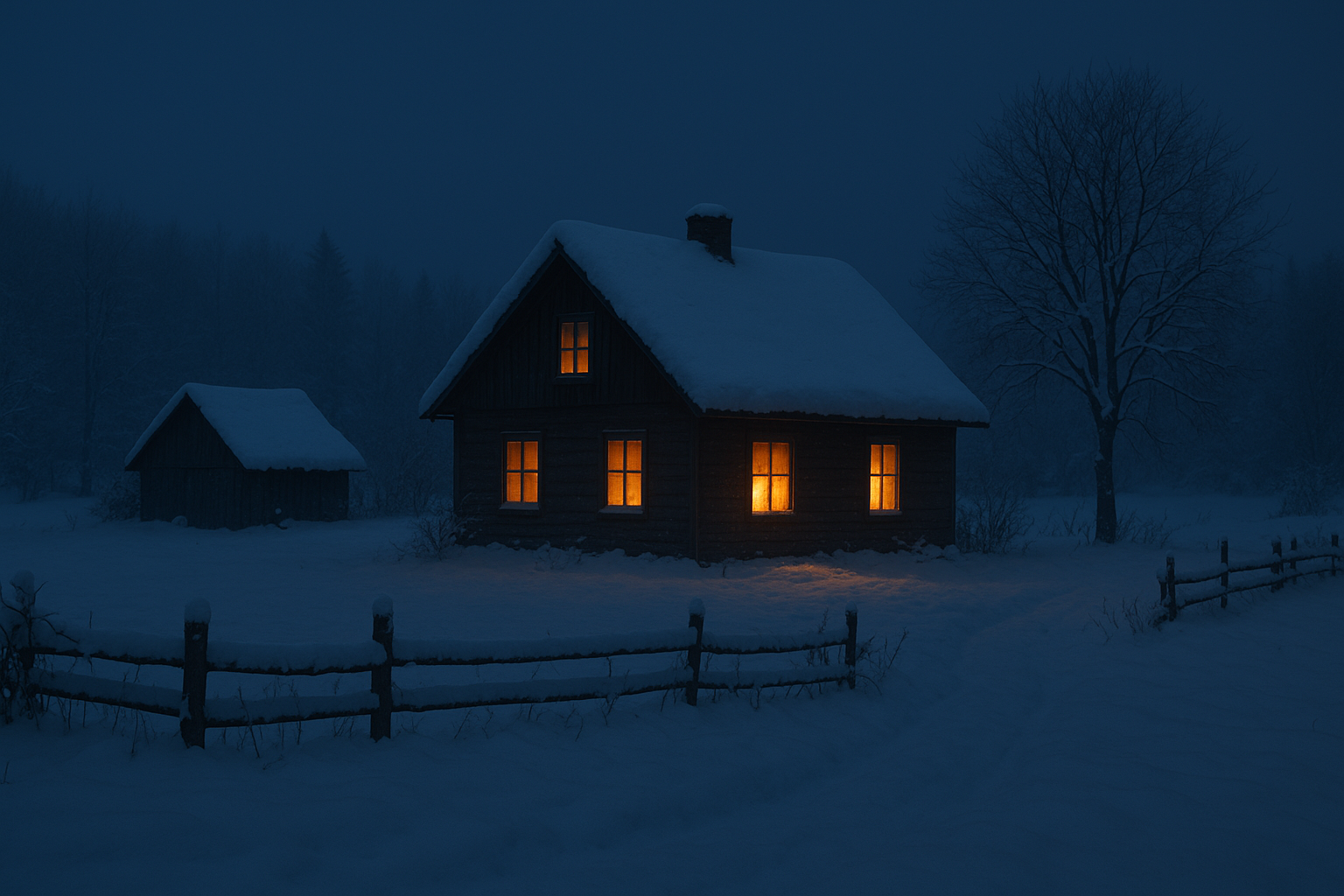Why Winter Is the Perfect Storm
Canada’s vast and rugged landscape makes power delivery especially vulnerable during winter. From freezing rain in Ontario to blizzards in the Prairies and ice storms in Québec and the Maritimes, the causes are many:
- Ice and snow buildup on power lines and trees can snap lines or poles.
- High energy demand strains provincial grids as furnaces, baseboards, and heat pumps run non-stop.
- Aging infrastructure in rural and northern regions struggles under extreme cold.
- Repair delays occur because snowed-in roads and subzero windchills slow hydro crews.
Events like the 1998 Eastern Ice Storm — which left 1.4 million Québecers without power for up to a month — or the 2023 Ontario winter grid failures prove how fast a modern city can go dark and cold.
🧊 When the Heat Fails: The Cascading Risks
Extended outages in the Canadian winter bring unique hazards:
1. Freezing Temperatures Indoors
Most Canadian homes rely on electric or forced-air systems. Without power, interior temperatures can drop below freezing within hours — particularly in rural or older houses.
2. Frozen or Burst Pipes
Plumbing lines in unheated basements and crawlspaces freeze quickly. Bursts can flood a home once power returns and thaw begins.
3. Food and Water Loss
- Electric well pumps stop working.
- Refrigerated food spoils after 24–48 hours.
- Frozen food outdoors can be safe — but only if sealed and protected from animals.
4. Dangerous Heating Methods
Improvised heating (like charcoal, camp stoves, or car idling) causes hundreds of carbon monoxide poisonings each winter. Every prepper home should have working CO detectors with battery backup.
5. Medical and Communication Failures
- Medical devices, fridges for insulin, and CPAPs fail without backup power.
- Cell towers and internet go offline.
- Emergency response times slow, especially in rural regions.
🏠 How to Prepare Like a Canadian Prepper
1. Build a Winter Outage Kit
Keep a dedicated “cold weather blackout bin” ready at all times:
- Lighting: LED lanterns, candles (use safely), headlamps, and spare batteries.
- Heat: Wool blankets, thermal sleeping bags, chemical hand warmers, and body-heat shelters.
- Cooking: Propane camp stove, cast-iron cookware, fuel canisters, and matches.
- Water: At least 4 L per person per day for 5 days minimum. Melt snow only after boiling or filtering.
- Food: Canned chili, beans, soups, freeze-dried meals, and dry staples.
- Power: Battery banks, small solar chargers, or a generator rated for Canadian winters.
- Sanitation: Bucket toilet setup, heavy-duty bags, and wet wipes.
- Communications: Hand-crank radio tuned to CBC/Environment Canada alerts.
2. Prepare Your Home
- Insulate pipes and keep a small trickle of water running in extreme cold.
- Seal windows and doors with plastic or foam to retain heat.
- Designate a “warm room” (usually a smaller central room) where everyone can sleep and conserve heat.
- Test smoke and CO detectors monthly and stock extra batteries.
- Install a woodstove or certified propane heater where possible — even if it’s a secondary heat source.
3. Backup Power Options
In Canada’s north and rural zones, generators aren’t a luxury — they’re a necessity.
- Gasoline or propane generator with safe outdoor placement (never indoors or in garages).
- Battery-inverter systems for quiet, short-term indoor power.
- Solar + battery kits work surprisingly well even in winter sun when snow-cleared regularly.
- For full-time preppers, diesel generators paired with biodiesel from canola are a sustainable backup.
4. Vehicle and Shelter Prep
Your vehicle can become a lifeline if the house becomes uninhabitable:
- Keep at least half a tank of fuel at all times.
- Stock blankets, food, candles, and a shovel.
- Never run the engine in an enclosed space.
Local community halls, churches, and even Legion branches sometimes open as warming centres — know where yours are before an emergency hits.
🤝 Community-Level Resilience
Canadian communities have learned the hard way that mutual aid saves lives.
- Establish a neighbourhood check-in plan for seniors or isolated families.
- Volunteer with your municipal emergency committee (EMO) or local ham radio group.
- Keep spare firewood, fuel, and food to trade or lend.
- Coordinate with nearby farms or rural properties for shared backup power and livestock care.
🧭 After the Power Comes Back
- Gradually bring appliances online to prevent surges.
- Check for water damage or burst pipes.
- Discard spoiled food — “when in doubt, throw it out.”
- Restock all emergency supplies before the next storm.
- Review what worked and what didn’t for future improvements.
🌨 Final Thoughts
Canadian winters are unforgiving. Every prepper knows that the weakest link in self-reliance is assuming the grid will always recover in time. Extended power failures test not just our comfort, but our resilience and adaptability.
Plan now. Stock wisely. And remember: warmth, water, and communication are your holy trinity of survival when the lights go out in January.
📘 Book Recommendation
Acres of Preparedness: Planning the Last Safe Place
A comprehensive guide to building a self-reliant Canadian retreat — from energy systems and livestock to food security and mutual aid networks.


